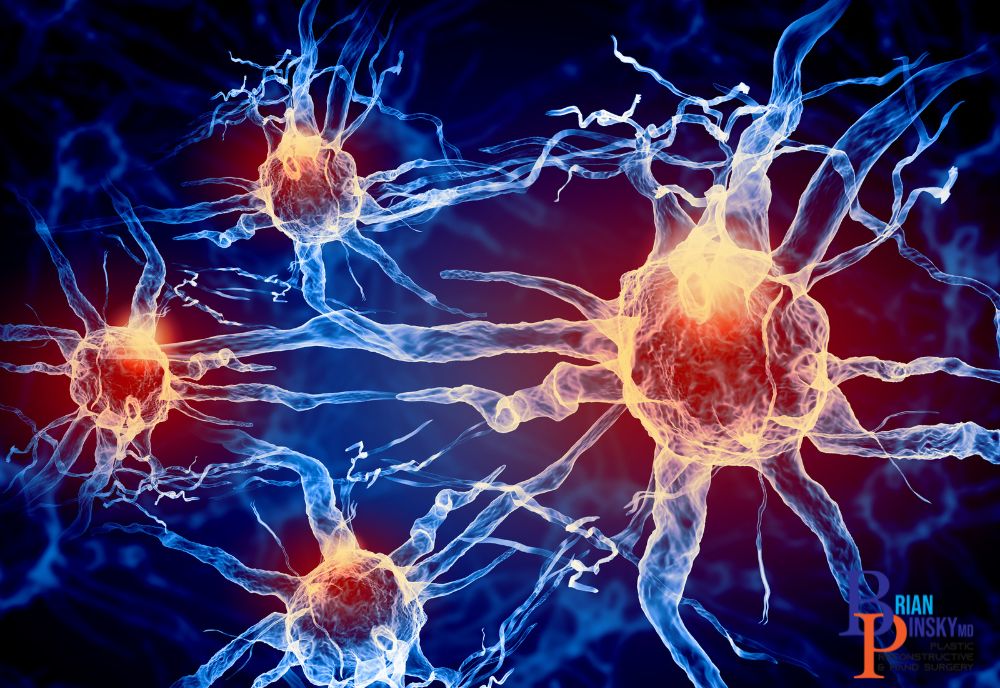
Nerve Repair & Reconstruction on Long Island
Whether you’re a mother looking to get a makeover to restore your pre-baby body, a breast cancer patient looking for reconstruction, or in need of elective hand surgery such as carpal tunnel syndrome, Dr. Pinsky is there to help you reach your desired results. Schedule an appointment today!

Our hands and wrists are delicate instruments, capable of fine movement and delicate sensations as the result of an intricate nerve system. With so many moving parts and fine sensations, damage to the nerves in this area can have a profound and life-altering effect. Injuries to the nerves in the wrist and hand often result from trauma to the area or as the result of long untreated repetitive motion injuries. Dr. Pinsky’s expertise with concerns involving the wrist and hands makes us an excellent choice for addressing these issues.
The Benefits Of Seeing A Microsurgical Specialist Like Dr. Brian Pinsky
The preservation or restoration of nerves requires a delicate form of surgery known as microsurgery. Microsurgical suturing techniques require a steady hand and a keen understanding of the intricate pathways followed by nerves in the hands. When direct reconnection of the nerve fibers proves impossible due to significant local damage, other options are available.
- Tubes known as nerve conduits that can serve as a jumper for small defects of the nerves.
- Nerve allografts that involve the use of donated human nerve tissue to close gaps.
- Nerve autografts using nervous tissue from the patient to close nerve gaps.
As a microsurgical specialist, Dr. Pinsky is able to provide an expert hand in resolving nerve injuries that have impaired nerve function. The expertise gained during his fellowship provides him with a keen understanding of nerve damage in the hands and wrist, and the microsurgical techniques needed to address them.
What Injuries Can Result In Nerve Damage To The Hand And Wrist?
The most common type of injury to the hand and wrist are sharp cuts the damage the nerves causing pain, scarring, and lasting numbness. These cuts are typically the cause of mishandling a knife in the kitchen, though any sharp implement can cause them. In addition to this common form of injury, we often see patients who have:
- Experienced traumatic injury that has resulted in an accompanying loss of nerve function either immediately or as time goes by.
- Loss of nerve tissue due to the removal of a tumor on the nerve.
- A diagnosis of peroneal nerve neuropathy.
While immediate repair of the injury is preferable, good success has been found when the repair is completed within three to four weeks of the injury date. When repair to the nerve is considered beyond this point, the permanent function of the nerve is often lost. Reconstructed nerves recover at a rate of approximately half to a full millimeter a day.
What Does Nerve Reconstruction And Repair Involve?
The procedure itself is relatively straight-forward, with the specifics of the case involving the length of the surgery and the potential results. In most cases, the surgery involves an incision being made at the location where the nerve damage has taken place. Once the nerve is revealed, the skin will be pulled back to allow the removal of the damaged nerve. Reconstructive steps are taken at this stage, followed by a closing of the wound. How long it will take for the function to be restored and the healing to complete will be discussed after the surgery is over.
If you’d like to learn more about this procedure and how Dr. Pinsky can address your nerve damage concerns, call our offices for an appointment today!
MTR
what is TMR?
TMR is Targeted Muscle Reinnervation. It’s a surgical technique pioneered at Northwestern for dealing neuromas (damaged and painful nerves). It involves surgically re-routing the end of the cut nerve and attaching it to a small muscle nerve branch essentially giving the nerve a target.
It’s described to treat any painful nerve injury which can be from a crush injury or more commonly a cut nerve ending. It was originally described for neuromas in the amputee population , and this is the most common application. It can be used for any traumatic neuroma.
